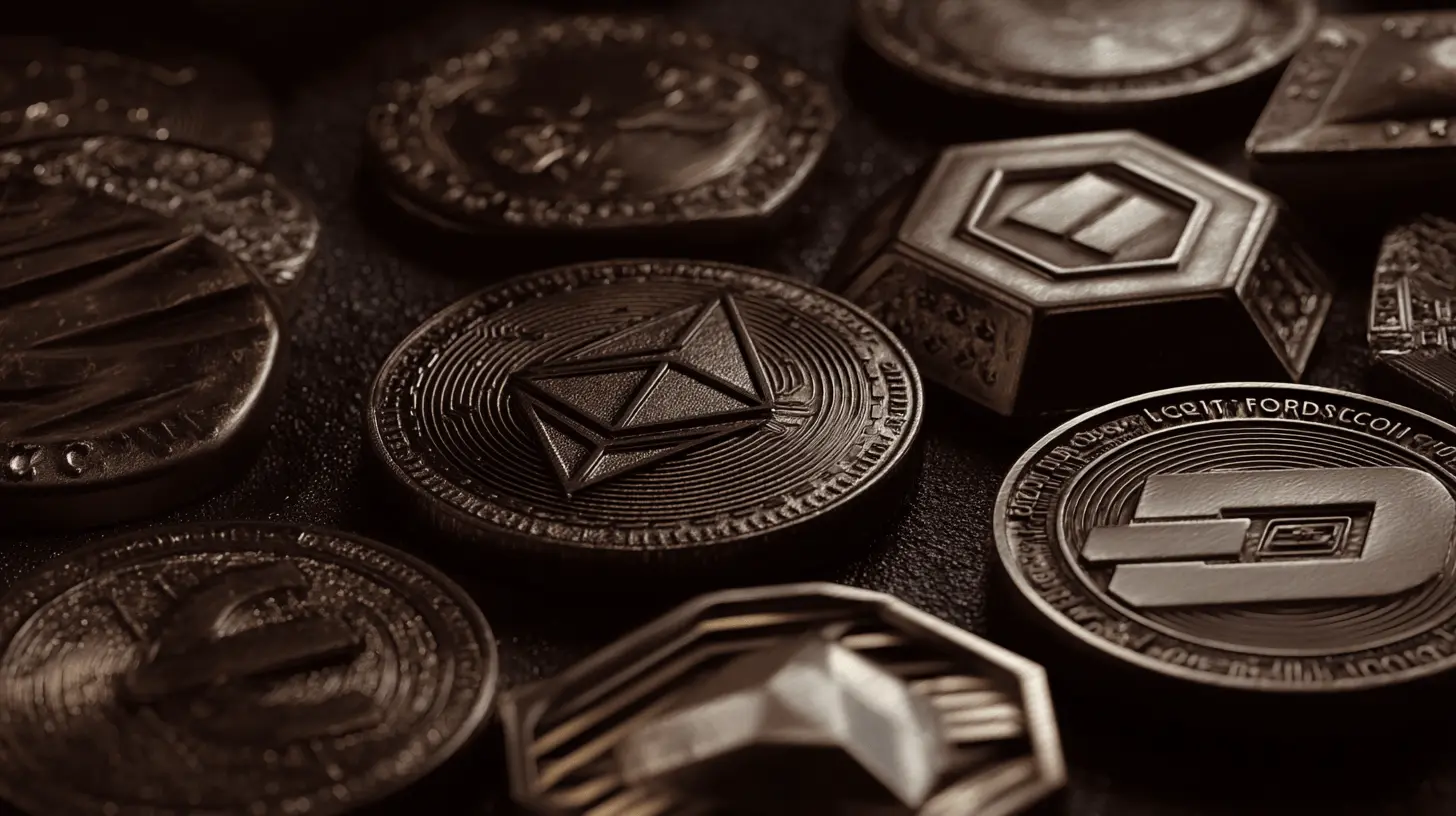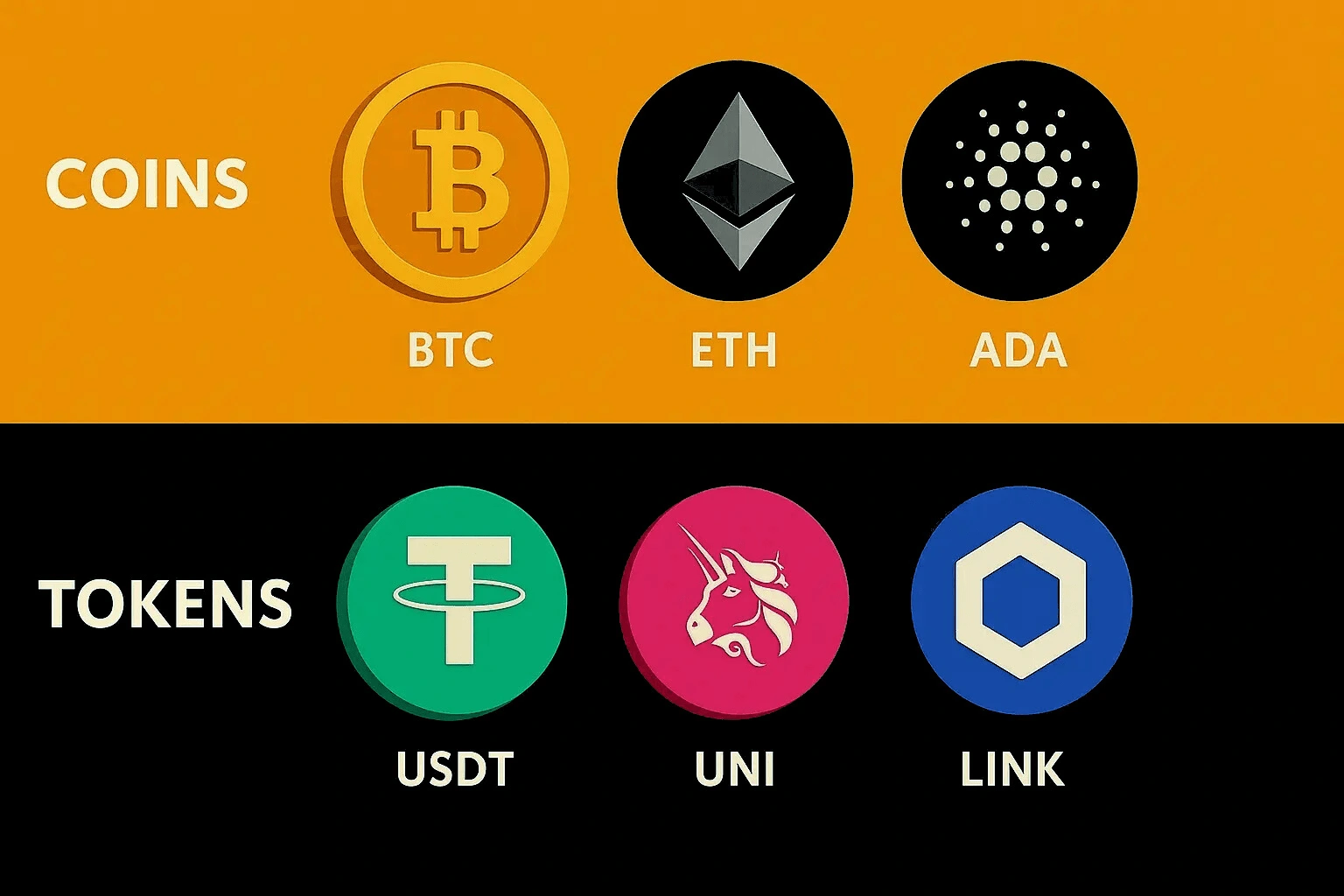
Coin vs. Token - What's the Difference?
Making crypto make sense: plain-language explanation of the difference between coins and tokens, with supporting references.
TL;DR
- •Coins (BTC, ETH, SOL) are native currencies of their blockchains - like dollars for countries. Tokens (USDT, UNI, LINK) are built on existing blockchains - like store coupons or gift cards.
- •Coins power networks and pay transaction fees. Tokens serve specific purposes: utility (BNB), rewards (BAT), governance (fan tokens), ownership (NFTs), or fundraising (ICOs).
- •Real-world token use cases: Ticketmaster sells NFT tickets on Polygon, RealT tokenizes real estate for fractional ownership, Chiliz powers voting rights for FC Barcelona and PSG fans.
- •Regulatory scrutiny intensifying: EU's MiCA regulation defines crypto asset rules, while SEC uses Howey Test to determine if tokens qualify as securities based on function, not label.
No agenda. No noise. Just clarity.
Get the MCMS brief - digital assets, AI, and law explained with evidence, not hype.
Join 1,000+ professionals. Unsubscribe anytime.
Coin vs. Token — What's the Difference, and Why Should You Care at All?
Everyone talks about crypto like it's all speculative investments in cryptocurrency — but there's a difference between a coin and a tokenA digital asset built on an existing blockchain, often representing utility or value. And if you want to understand how crypto works (or how it might affect your money), this is where it starts.
Think dollars vs. coupons — but for blockchains
Coins: A Blockchain's Native Currency
Coins are like real money.
Yes, it's hard to imagine something digital, not issued by a government, as 'real money' — but what is real money anyway?
Fiat money, like dollars or euros, comes from governments. The word comes from Latin "let it be done." That means a ruler or government decreed a currency to be coined and serve as a national currency, accepted by merchants, and in most cases even accepted internationally. It's money because the government says so.
Coins in crypto? These are the native currencies of their ecosystems. They're like the "dollars" of their networks.
“"Coins are money because the blockchainA decentralized, digital ledger of transactions maintained across multiple computers's code, miners, and validators agree they are. For crypto coins, the blockchain is their country — and the coin is its national currency."
A coin is the native asset of a blockchain. It powers the network, pays for transactions, and stores value.
Unlike 'real money' that can be printed or forged, authenticity for cryptocurrencies is built into the blockchainA decentralized, digital ledger of transactions maintained across multiple computers.
Examples:
- Bitcoin (BTC) → Bitcoin blockchain
- Ethereum (ETH) → Ethereum
- Solana (SOL) → Solana

Tokens: The Everything-Else Category
If crypto coins are the native currencies, like the currency of a country, a tokenA digital asset built on an existing blockchain, often representing utility or value is like a coupon or store credit issued by stores inside that country. A token runs on someone else's blockchainA decentralized, digital ledger of transactions maintained across multiple computers, like EthereumA decentralized blockchain platform that enables smart contracts and decentralized applications or SolanaA high-performance blockchain known for fast transactions and low fees. They're not part of the core protocol. They're more like apps or tools that use the existing rails.
Examples:
- USDT (Tether) → Ethereum, Solana, Tron
- Uniswap (UNI) → Ethereum
- Chainlink (LINK) → Ethereum
- MATIC — started as a token on Ethereum, later launched its own chain
Projects create tokens for many reasons:
To power apps (utility): BNB (Binance Coin)
Used to pay trading fees, participate in tokenA digital asset built on an existing blockchain, often representing utility or value launches, and access services in the Binance ecosystem. Holders get discounts and priority access.
As rewards: BAT (Basic Attention Token)
Used in the Brave browser to reward users for viewing ads and pay content creators.
To grant voting rights (governance): Chiliz Fan Tokens™
Digital assets used by global sports teams (FC Barcelona, Juventus, PSG), powered by Chiliz, allowing fans to participate in polls, access rewards, and own digital collectibles.
To track ownership (NFTs, asset tokens): Ticketmaster + NFT Tickets
Ticketmaster sells NFT tickets using Flow and Polygon blockchains, providing benefits like early access and collectible proof of attendance.
Real Estate Tokens
Platforms like RealT (USA), RedSwan (USA), and Brickken (Europe/LatAm) let users buy fractions of real estate and earn rent in crypto.
To raise funds (ICOs)
Some are game-changers. Others — just hot air with a logo.
Why It Matters
Knowing the difference helps you:
- Spot real projects vs fluff/bluff
- Judge long-term potential
- Understand centralization, risk, or legality
Coins are generally more stable and decentralized. Tokens are easier to launch, but sometimes riskier.
Most scams hide behind tokenA digital asset built on an existing blockchain, often representing utility or value hype. Most networks run on coins.
What about stablecoins, altcoins, utility tokens?
We'll cover those soon. They're subtypes within the coin/tokenA digital asset built on an existing blockchain, often representing utility or value universe.
Aren't Tokens and Coins All "Securities" Now?
Regulators are watching closely.
European Union: MiCA (Markets in Crypto-Assets Regulation)
MiCAAn EU regulatory framework standardizing crypto rules for issuers and service providers aims to define how crypto assets — including tokens and stablecoins — are regulated.
United States: SEC & Howey Test
The SEC uses the Howey Test to decide whether a crypto asset is a security. They care what it does, not what you call it.
We'll dive deeper into regulation, the XRP case, and the Howey TestFour-point legal test determining whether a crypto asset qualifies as a security in future issues.
The Whole Story, In a Nutshell
- Coins are like dollars, euros, yen — base currency of a blockchain
- Tokens are like coupons or gift cards — ride the rails but offer something specific
Next Up
How the collapse of Terra's UST reshaped the conversation around stablecoins, trust, and the future of digital currencies.
If you read this far, you're already ahead of most professionals.
Join 1,000+ readers who get institutional-grade insights - clear, concise, and verifiable.
No spam. Unsubscribe anytime.
If you found this useful, please share it.
Questions or feedback? Contact us
MCMS Brief • Classification: Public • Sector: Digital Assets • Region: Global
References
- 1. Investopedia - “Crypto Tokens vs. Cryptocurrencies vs. Crypto Commodities” (January 15, 2024) [Link]
- 2. Investopedia - “Understanding Crypto Tokens” (February 20, 2024) [Link]
- 3. Ledger Academy - “Coins vs Tokens: What's the Difference?” (January 1, 2024) [Link]
- 4. Binance Academy - “What is BNB?” (January 1, 2024) [Link]
- 5. Brave Browser - “How Brave Rewards Work” (January 1, 2024) [Link]
- 6. Socios.com - “Five Years of Fan Tokens” (June 15, 2024) [Link]
- 7. CoinDesk - “Ticketmaster Partners with Blockchain Firm Dapper Labs to Issue NFTs for Live Events” (August 31, 2022) [Link]
- 8. RealT - “RealT: Fractional Real Estate Investment” (January 1, 2024) [Link]
- 9. Ethereum.org - “ERC-20 Token Standard” (January 1, 2024) [Link]
- 10. Investopedia - “What is an ICO?” (January 1, 2024) [Link]
- 11. U.S. Securities and Exchange Commission - “Initial Coin Offerings: Risks and Regulation” (January 1, 2023) [Link]
- 12. European Securities and Markets Authority - “Markets in Crypto-Assets Regulation (MiCA)” (December 30, 2024) [Link]
- 13. U.S. Securities and Exchange Commission - “Framework for Investment Contract Analysis of Digital Assets” (January 1, 2024) [Link]
SOURCE FILES
Source Files expand the factual layer beneath each MCMS Brief — the verified data, primary reports, and legal records that make the story real.
Coin vs Token Fundamentals and Technical Standards
The fundamental distinction between coins and tokens is architectural. Coins (Bitcoin, Ethereum, Solana) are native currencies of their own blockchains, functioning as both medium of exchange and transaction fee payment mechanism. Tokens are built on existing blockchains using smart contract standards. Investopedia provides authoritative educational frameworks distinguishing cryptocurrencies, tokens, and crypto commodities for institutional and retail audiences. Ledger Academy, from a major hardware wallet provider, covers the practical custody and security implications of this distinction. Ethereum's ERC-20 standard established the technical foundation for fungible tokens, enabling billions in tokenized assets. This standard defines how tokens transfer, check balances, and interact with smart contracts - the infrastructure powering everything from stablecoins (USDT, USDC) to utility tokens (UNI, LINK).
Real-World Token Applications: Utility, Governance, and Asset Tokenization
Tokens serve diverse functions beyond speculation. BNB (Binance Coin) demonstrates utility token economics: holders receive trading fee discounts up to 25%, priority access to token launches, and participate in quarterly burn mechanisms reducing supply. Binance Academy documents these operational benefits. Basic Attention Token (BAT) powers Brave browser's privacy-first advertising model. Users earn BAT for viewing ads, creators receive tips in BAT, and advertisers pay in BAT for attention - a closed-loop economy with measurable utility. Brave's documentation shows real adoption: millions of monthly active users. Fan tokens (Socios.com platform, powered by Chiliz) grant governance rights for sports organizations. FC Barcelona, Juventus, and PSG fans vote on club decisions - jersey designs, stadium music, matchday experiences. Five years of operations demonstrate this isn't theory: over 150 sports partnerships with binding fan votes. Real estate tokenization platforms like RealT enable fractional property ownership via ERC-20 tokens. Investors receive rental income in stablecoins. Ticketmaster partnered with Dapper Labs to issue NFT tickets on Flow and Polygon blockchains, providing collectible proof of attendance and resale rights.
Regulatory Classification: Securities, Utilities, and the Howey Test
Regulatory treatment of tokens depends on function, not labels. The EU's Markets in Crypto-Assets Regulation (MiCA) provides comprehensive rules for crypto asset issuers and service providers. ESMA distinguishes asset-referenced tokens, e-money tokens, and utility tokens, with specific compliance requirements for each category. In the United States, the SEC applies the Howey Test (1946 Supreme Court precedent) to determine securities classification. The test asks: Is there an investment of money in a common enterprise with expectation of profit from others' efforts? If yes, it's a security requiring registration or exemption. The SEC's Framework for Investment Contract Analysis clarifies Howey application to digital assets. A token sold to fund development, with promoters promising future value increases, likely qualifies as a security - regardless of whether it's marketed as a 'utility token.' Initial Coin Offerings (ICOs) exemplify this regulatory scrutiny. The 2017-2018 ICO boom raised billions but attracted significant fraud. Investopedia documents ICO mechanics and risks. The SEC issued multiple warnings about unregistered securities offerings, establishing that economic reality - not marketing - determines classification.
KEY SOURCE INDEX
- ●Investopedia — Authoritative financial education resource providing comprehensive explainers on coins, tokens, ICOs, and crypto asset categories
- ●Ledger Academy — Hardware wallet provider's educational resource covering coin vs token distinction and custody considerations
- ●Ethereum.org — Ethereum Foundation's official documentation for ERC-20 token standard powering fungible tokens
- ●Binance Academy — Leading exchange's educational platform documenting BNB utility token economics and ecosystem benefits
- ●Brave Browser — Privacy-focused browser's documentation on Basic Attention Token (BAT) rewards model and creator economy
- ●Socios.com — Fan token platform documenting five years of sports team tokenization and fan governance participation
- ●RealT — US-based real estate tokenization platform enabling fractional property ownership via ERC-20 tokens
- ●ESMA (European Securities and Markets Authority) — EU regulator's comprehensive MiCA framework defining crypto asset categories and compliance requirements
- ●U.S. Securities and Exchange Commission — SEC's framework for applying Howey Test to digital assets and ICO regulatory guidance
Related Reading
Disclaimer: This content is for educational and informational purposes only. It is NOT financial, investment, or legal advice. Cryptocurrency investments carry significant risk. Always consult qualified professionals before making any investment decisions. Make Crypto Make Sense assumes no liability for any financial losses resulting from the use of this information. Full Terms